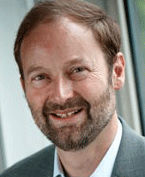

Nonwovens are everywhere. Can we know at length the role that EDANA plays in the interest of this omni present industry? What all are EDANA‘s activities?
EDANA provides a comprehensive range of services and supplies its members with the information and data necessary for them to enhance the industry’s goals and performance.
With strategic advice from the Board, EDANA coordinates a diverse network of Committees, Working Groups and Task Forces on behalf of its members, enabling them to:
• undertake joint initiatives in non-competitive areas
• exchange information, experiences and knowledge
• act on emerging issues and define common industry positions
• contribute expert advice and technical assistance to standards organizations and to legislators during the policy-making process
In addition, the diversity within the association, while complex, is undoubtedly one of EDANA’s major strengths, as it provides unparalleled opportunities for information exchange, joint-industry initiatives and networking in a different form and setting than individual commercial relationships.
Nonwovens has wide application areas. Amongst these, which industrial sectors are likely to be developing the most?
Health and hygiene sectors remain strong, and according to our statistics for 2009, published less than a month ago, the medical nonwovens industry is growing, reflecting the importance of infection prevention and control for both the patient and the healthcare professional. In addition, we expect the filtration sector to strengthen in the future.
Global consumption of fibres in nonwovens industry is-
The EDANA nonwoven production statistics show that production for 2008 was 1,609,819 tones, a decline of 6.3% from the year before. While trade flows for both exports and imports slowed in 2009, the EU27 trade balance of nonwovens roll goods was still highly positive, in both volume and in value. Moreover, for each subcategory of nonwovens, EU27 is still a net exporter. This positive trade balance helped contain the unfavourable trade balance of the overall European textile industry.
Strong markets would be-
Asia remains a very strong market for the global nonwovens and related industries; however, we remain interested, and work closely with businesses across Eastern Europe, North Africa and the Indian subcontinent.
And, areas of challenges? How will Europe fight out competition from low cost countries?
Potential restrictive legislation and trade regulations remain an issue for businesses within the nonwoven industry, and are one of the areas where our assistance as a trade association can have a most profound effect.
In addition, our industry has growing concerns of overcapacity and low profitability. In addition, more investors throughout the world are entering into or considering the nonwovens business with its seemingly higher than average growth rates. Current conditions of transportation costs, however, do not appear to favour big shifts of roll-goods production from one continent to another (although more labour-intensive converting operations may draw the whole supply chain to where these are cheapest). Anyhow, to compete in long-term, European nonwovens companies must concentrate their efforts more heavily on innovation, product differentiation and service.
On technology front, which all future trends do you see working closely with nonwovens?
Nanotechnology and new ways of allowing companies to make products that work in the way and how the consumer wants them to; are trends that may have a potential influence on our industry and the goods it produces.
However, of greater importance to businesses right now is the way in which existing technology is combined to make the best of what technologies are available today. This hybridization can best be seen in the combination of spun melt and spun lace technologies.
Which all activities has EDANA undertaken to foster nonwovens industry via trade fairs and events?
EDANA both organizes its own, and participates in a significant number of external events across EMEA, Asia and the Americas, to deliver education and knowledge to the industry, and to provide a forum for businesses to meet and interact with each other.
For example, the Filtrex 2010 conference and exhibition, held in Cologne, Germany from the 13th to 14th of October supports the expected market growth for filtration, and will cover those themes relevant to the industry, including new filter media technologies, market trends, automotive, air, liquid and gas filtration, water treatment, and emission controls and legislation.
The association is the sponsor of INDEX, the world’s leading nonwovens exhibition, next edition of which, INDEX 11, will take place from 12-15th April 2011 in Geneva, Switzerland.
How does EDANA ensure its members’ compliance with ecology & environmental concern?
The EDANA Board has clearly established Sustainability as one of its key area of strategy and action. The recent Summary Report and review of EDANA's Approach to Sustainability illustrates one step in our objective to develop a Sustainability Strategy for EDANA, to coordinate sustainability related activities of Committees, Working Groups and Task Forces within the association, and to guide members through the promotion of “Good Sustainability Practice” and effective communication.
We are committed not only to address the challenges that have been identified, but also to continue to submit the next steps of our action programme, and hopefully, our next achievement of a continual examination and dialogue with experts and stakeholders.
#######DISCLAIMER: All views and opinions expressed in this column are solely of the interviewee, and they do not reflect in any way the opinion of Fibre2Fashion.com.